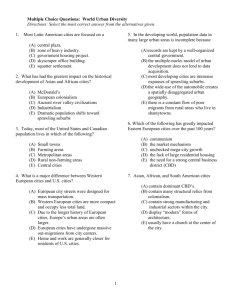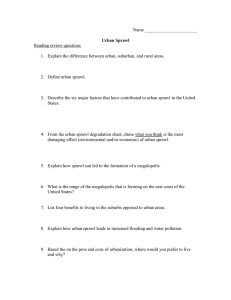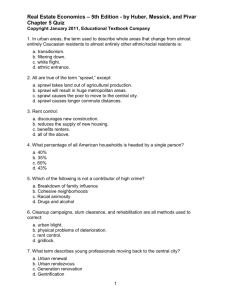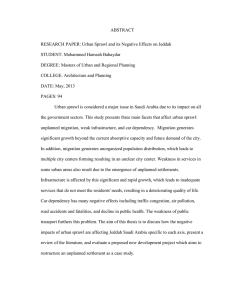First comes the suburban sprawl, then the spread as study... dependency to a few extra pounds
advertisement
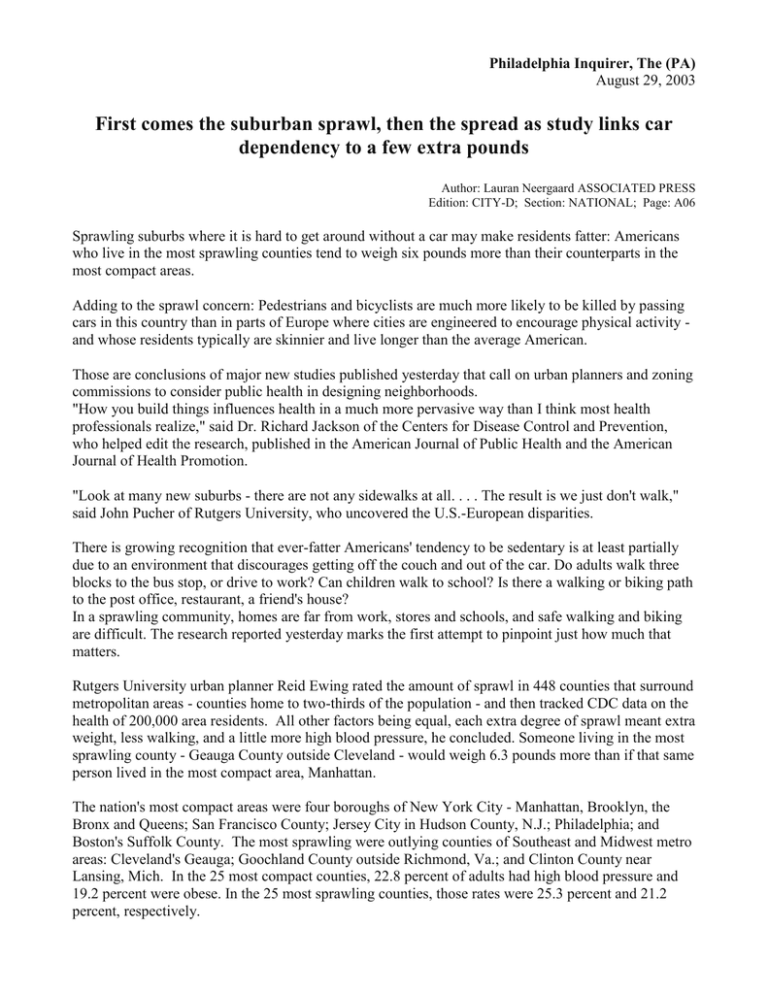
Philadelphia Inquirer, The (PA) August 29, 2003 First comes the suburban sprawl, then the spread as study links car dependency to a few extra pounds Author: Lauran Neergaard ASSOCIATED PRESS Edition: CITY-D; Section: NATIONAL; Page: A06 Sprawling suburbs where it is hard to get around without a car may make residents fatter: Americans who live in the most sprawling counties tend to weigh six pounds more than their counterparts in the most compact areas. Adding to the sprawl concern: Pedestrians and bicyclists are much more likely to be killed by passing cars in this country than in parts of Europe where cities are engineered to encourage physical activity and whose residents typically are skinnier and live longer than the average American. Those are conclusions of major new studies published yesterday that call on urban planners and zoning commissions to consider public health in designing neighborhoods. "How you build things influences health in a much more pervasive way than I think most health professionals realize," said Dr. Richard Jackson of the Centers for Disease Control and Prevention, who helped edit the research, published in the American Journal of Public Health and the American Journal of Health Promotion. "Look at many new suburbs - there are not any sidewalks at all. . . . The result is we just don't walk," said John Pucher of Rutgers University, who uncovered the U.S.-European disparities. There is growing recognition that ever-fatter Americans' tendency to be sedentary is at least partially due to an environment that discourages getting off the couch and out of the car. Do adults walk three blocks to the bus stop, or drive to work? Can children walk to school? Is there a walking or biking path to the post office, restaurant, a friend's house? In a sprawling community, homes are far from work, stores and schools, and safe walking and biking are difficult. The research reported yesterday marks the first attempt to pinpoint just how much that matters. Rutgers University urban planner Reid Ewing rated the amount of sprawl in 448 counties that surround metropolitan areas - counties home to two-thirds of the population - and then tracked CDC data on the health of 200,000 area residents. All other factors being equal, each extra degree of sprawl meant extra weight, less walking, and a little more high blood pressure, he concluded. Someone living in the most sprawling county - Geauga County outside Cleveland - would weigh 6.3 pounds more than if that same person lived in the most compact area, Manhattan. The nation's most compact areas were four boroughs of New York City - Manhattan, Brooklyn, the Bronx and Queens; San Francisco County; Jersey City in Hudson County, N.J.; Philadelphia; and Boston's Suffolk County. The most sprawling were outlying counties of Southeast and Midwest metro areas: Cleveland's Geauga; Goochland County outside Richmond, Va.; and Clinton County near Lansing, Mich. In the 25 most compact counties, 22.8 percent of adults had high blood pressure and 19.2 percent were obese. In the 25 most sprawling counties, those rates were 25.3 percent and 21.2 percent, respectively. Those are not huge differences, Ewing acknowledged. But the risk from sprawl equaled certain other risk factors for obesity and hypertension, such as eating few fruits and vegetables, he said. Far worse were Pucher's findings that per trip, American pedestrians are roughly three times more likely to be killed by a passing car than are German pedestrians - and more than six times more likely than Dutch pedestrians. For bicyclists, Americans are twice as likely to be killed as Germans and more than three times as likely as Dutch cyclists. In Europe, people make 33 percent of their trips by foot or bicycle, compared with just 9.4 percent of Americans' trips. Pucher said the extra activity had to be healthy, as life expectancy in the Netherlands and Germany was about two years longer than in the United States, and obesity rates were lower. Why can these Europeans walk and bike more, and more safely, than Americans? It's not just travel distance - 41 percent of U.S. trips are shorter than 2 miles, yet most are by car. Instead, Pucher cited Dutch and German policies that encourage more sidewalks and bike paths, traffic calming, auto-free zones in cities, extensive road-sharing education for drivers and cyclists, and pedestrian-friendly urban design. Some groups plan to use the research to back so-called smart-growth initiatives, including a battle in Congress next month over whether $600 million in transportation funds should go for safer cycling and walking programs and other transit alternatives, or for highway construction. Some U.S. cities are copying Europe's policies, said Andy Clarke of the League of American Bicyclists. Education and urban design allowed Portland, Ore., to increase bicycle ridership by 143 percent in the last decade without increasing crashes, he said. The kind of urban redesign the new research envisions will take time, the CDC's Jackson cautioned. "It's really about the communities and environments we're going to give our children and our grandchildren."

